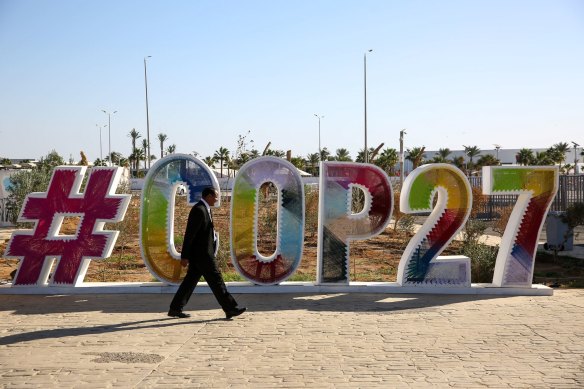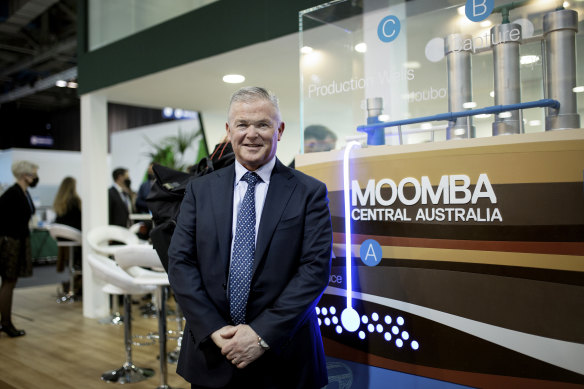
For years, being an Australian at the annual UN Climate Change Conference was deeply uncomfortable. We watched in dismay as our government dragged its heels and embarrassed Australia on the world stage. Every other day we would rack up another “fossil of the day” award, reserved for the country that has done the most to frustrate progress.
This year is different. Australia has shown up with a stronger emissions reduction target and a number of initiatives to accelerate its energy transformation. The government has been signing onto many of the deals it skipped last year, including the Global Methane Pledge, and we expect more announcements over the coming days.

Australia has already signed onto numerous agreements at this year’s COP summit in Egypt.Credit:Bloomberg
Over at the Australian pavilion, gone is the infamous Santos exhibit, replaced by a selection of stunning Indigenous artwork. Though thankfully the coffee machine – perhaps the one thing that bought Australia any goodwill in Glasgow – has made a return.
So far, so good. But while Australia has been welcomed back into the fold, the truth is we are starting from a long way behind and with a lot of damage to undo. In the world’s eyes, Australia is still a fossil fuel giant. The fact we are still approving massive new gas developments – a move that is utterly incompatible with tackling the climate crisis – has not gone unnoticed among delegates in Egypt.
Nor has the fact Australia is yet to announce significant new funding to support climate solutions in developing countries. And when it comes to the biggest fight at this year’s summit – the urgent need for financial support to address permanent loss and damage from climate change – Australia’s signals have been mixed. Put simply, Australia still has a long way to go yet to show it is serious about driving down its own emissions and supporting urgent climate action around the world.

Santos CEO Kevin Gallagher controversially showcased the Moomba CCS project at COP26 last year.Credit:Emily Macinnes
Unsurprisingly, much of the talk around the Australian pavilion has focussed on Australia’s bid to host COP31 in 2026, in partnership with the Pacific. It’s an exciting development, though one that will bring unprecedented scrutiny and expectations. So, what will it take for Australia to move from being a handbrake on global climate action to a global climate leader?
Like anything, we should start at home. Throughout the first week we have been listening to traditional owners talk about the importance of putting self-determination at the heart of climate action. We need to move fast, but we need to move together. Whether it’s large-scale renewable energy projects or mining for critical energy minerals, we cannot repeat the mistakes of the past and pursue climate solutions in ways that defy Indigenous rights and entrench injustice and inequality.
Rather, we need solutions that leave communities stronger and start to undo the damages of colonialism. The Australian government has been happy to provide platforms for First Nations voices at its pavilion, but is it ready to listen? Could we, by COP31, turn ourselves into a model for truly inclusive, community-led solutions that create a brighter future for everyone?









 Add Category
Add Category